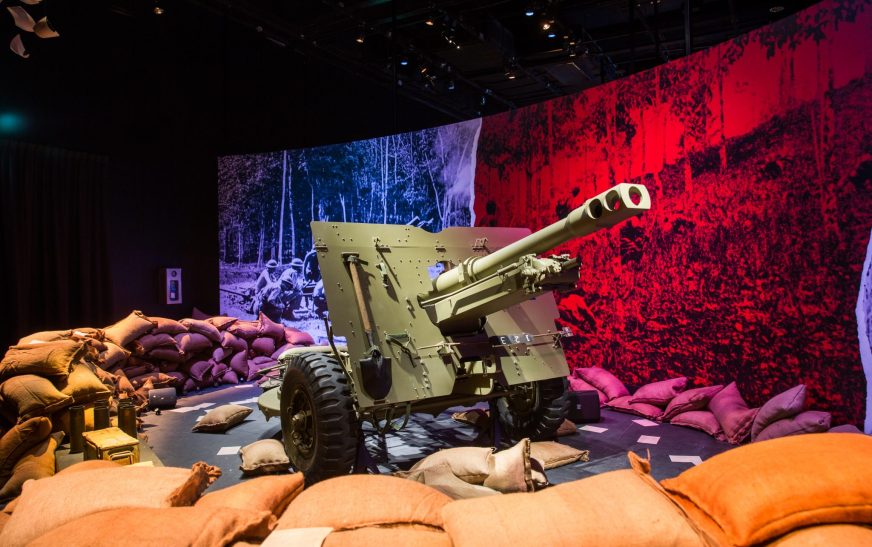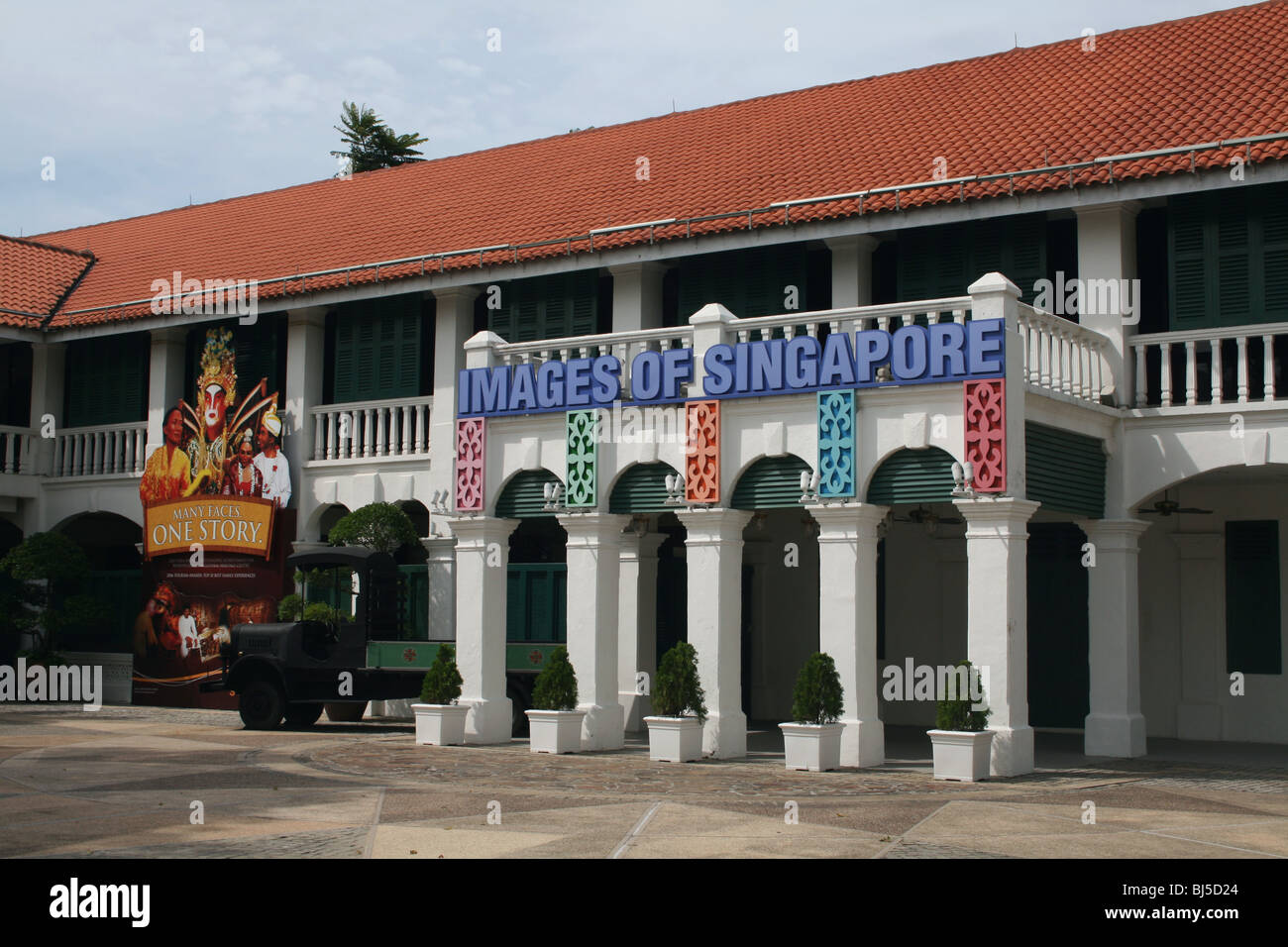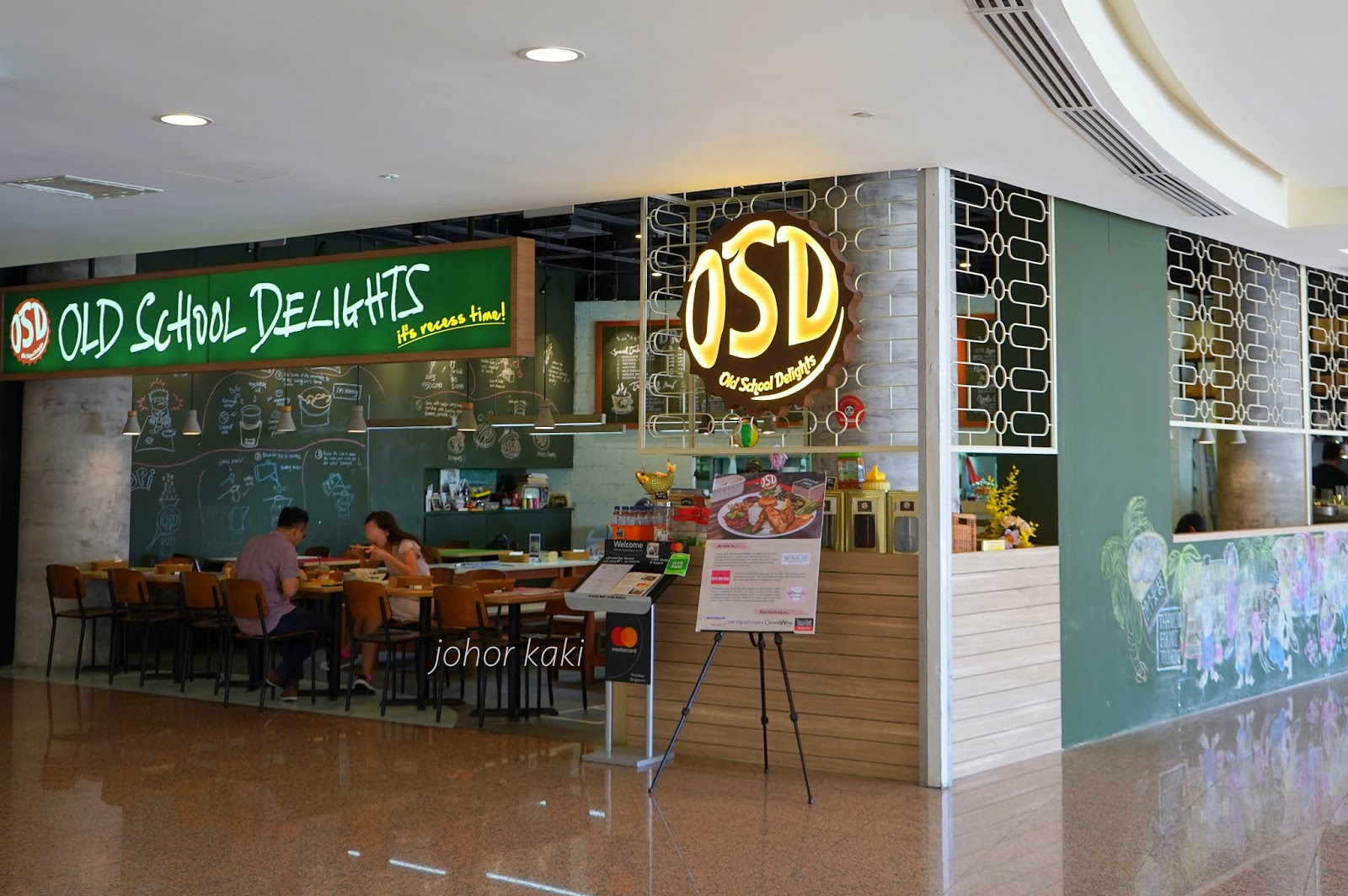The Singapore War Museum, a somber reminder of the past, stands as a testament to the resilience and bravery of those who lived through one of the darkest chapters in Singapore’s history. Nestled within the former Changi Prison, this museum preserves the memories of the Japanese occupation during World War II. It is an essential visit for anyone interested in history, offering a deeply moving and educational experience. In this article, we explore ten must-see exhibits that every history enthusiast should experience when visiting the Singapore War Museum.
Singapore War Museum:The Changi Murals-Art in the Midst of War
One of the most poignant exhibits in the Singapore War Museum is the Changi Murals. These beautiful and haunting murals were painted by British bombardier Stanley Warren during his imprisonment in Changi. Despite the harsh conditions, Warren created these religious murals on the walls of the prison’s chapel, symbolizing hope and faith amidst despair. The murals, which have been carefully preserved, tell a story of resilience and the human spirit’s capacity to endure even in the darkest of times.
Singapore War Museum: The Surrender Chamber-A Moment That Changed History
The Surrender Chamber is another must-see exhibit, vividly recreating the moment when British forces surrendered to the Japanese on February 15, 1942. This event marked the beginning of the Japanese occupation of Singapore, a period that would last for three and a half years. The exhibit uses life-sized dioramas and audio-visual effects to bring this historic moment to life, allowing visitors to witness the tension and gravity of the situation. The Surrender Chamber serves as a powerful reminder of the consequences of war and the importance of peace.
Prisoners of War (POW) Exhibit: Stories of Survival
The Prisoners of War exhibit is dedicated to the men and women who endured captivity in Changi Prison during the Japanese occupation. Through personal artifacts, letters, photographs, and oral histories, this exhibit tells the stories of courage, sacrifice, and survival. Visitors can learn about the daily struggles of POWs, their resilience in the face of adversity, and the makeshift communities they formed to support one another. This exhibit provides a deeply personal insight into the lives of those who suffered during the war.
The Battle of Singapore: A Comprehensive Overview
The Battle of Singapore exhibit offers a comprehensive overview of the events leading up to the fall of Singapore. Through maps, military artifacts, and interactive displays, visitors can explore the strategic decisions and battles that culminated in Singapore’s surrender. The exhibit covers key moments such as the defense of the city, the role of the Allied forces, and the impact of the battle on Singapore’s civilian population. This exhibit is essential for understanding the broader context of the war and its effects on Singapore.
Changi Prison Barracks: A Glimpse into POW Life
Another significant exhibit is the Changi Prison Barracks, which offers a glimpse into the living conditions of prisoners during the war. The barracks have been recreated to show the cramped and austere environment that POWs endured. Visitors can see the makeshift beds, limited personal belongings, and communal areas where prisoners tried to maintain a semblance of normal life. This exhibit highlights the harsh realities of war and the incredible resilience of those who survived.
The War Crimes Trials: Seeking Justice
The War Crimes Trials exhibit is dedicated to the pursuit of justice after the war. Following the liberation of Singapore, trials were held to prosecute Japanese soldiers and officers responsible for war crimes. This exhibit features original documents, photographs, and audio recordings from the trials, providing insight into the process of seeking accountability and justice. It also explores the broader implications of these trials on international law and human rights. For those interested in the legal aftermath of war, this exhibit is particularly compelling.
Civilian Internees Exhibit: The Forgotten Victims
While much of the focus is on military history, the Singapore War Museum also sheds light on the experiences of civilian internees during the Japanese occupation. The Civilian Internees exhibit tells the stories of men, women, and children who were interned in camps across Singapore. Through personal testimonies, photographs, and artifacts, visitors can learn about the hardships these civilians faced, from malnutrition to forced labor. This exhibit serves as a reminder that war affects everyone, not just those on the battlefield.
The Resistance Movement: Acts of Defiance
The Resistance Movement exhibit honors the bravery of those who resisted Japanese rule, often at great personal risk. The exhibit showcases the efforts of underground groups, local citizens, and Allied forces who carried out acts of sabotage, espionage, and propaganda to undermine the occupiers. Artifacts on display include clandestine radios, secret codes, and personal items belonging to resistance fighters. This exhibit highlights the courage of those who fought for freedom and the enduring spirit of resistance in the face of oppression.
Letters from Changi: Personal Stories of War
The Letters from Changi exhibit is one of the most moving displays in the museum. It features a collection of letters written by prisoners of war and civilian internees during their time in Changi Prison. These letters, often written under difficult circumstances, offer a deeply personal insight into the thoughts, fears, and hopes of those who lived through the occupation. The exhibit allows visitors to read these letters and understand the emotional toll of the war on individuals and families.
The Legacy of War: Singapore’s Post-War Recovery
The Legacy of War exhibit explores the aftermath of the Japanese occupation and Singapore’s journey towards recovery. This exhibit covers the period immediately following the war, including the challenges of rebuilding the city, the repatriation of prisoners, and the trials of collaborationists. It also looks at the long-term impact of the war on Singapore’s society, politics, and identity. Through photographs, documents, and multimedia presentations, this exhibit provides a comprehensive view of how Singapore emerged from the war and began to rebuild itself into the vibrant city it is today.
Conclusion
The Singapore War Museum is a place of reflection, education, and remembrance. Each of these ten must-see exhibits offers a unique perspective on the events of World War II and the Japanese occupation of Singapore. For history enthusiasts, a visit to the museum is an opportunity to gain a deeper understanding of the past and its lasting impact on the present. The stories of resilience, courage, and survival preserved within the museum’s walls serve as a powerful reminder of the human cost of war and the importance of preserving peace.
FAQs
1. What are the opening hours of the Singapore War Museum?
The Singapore War Museum is typically open from 9:30 AM to 5:00 PM daily, but it’s advisable to check the official website for any changes in operating hours before planning your visit.
2. Is there an admission fee to visit the Singapore War Museum?
Yes, there is an admission fee for entry into the Singapore War Museum. Ticket prices may vary for adults, seniors, and children. Special discounts may be available for groups or during certain promotions.
3. Are guided tours available at the Singapore War Museum?
Yes, guided tours are available and highly recommended to enhance your understanding of the exhibits. These tours are usually conducted by knowledgeable guides who provide detailed insights into the history and significance of each exhibit.
4. Can I take photographs inside the museum?
Photography is allowed in certain areas of the museum, but flash photography and videography may be restricted in some exhibits. It’s best to check with museum staff regarding specific guidelines.
5. Is the Singapore War Museum accessible to visitors with disabilities?
Yes, the museum is equipped with facilities to accommodate visitors with disabilities, including ramps, elevators, and accessible restrooms. The staff is also available to assist with any special needs during your visit.
This article provides a thorough overview of the key exhibits at the Singapore War Museum, making it an essential read for history enthusiasts planning to visit. If you need further adjustments or additional content, feel free to ask!
Also read: Singapore Tourist Map: 10 Hidden Gems You Must Visit










